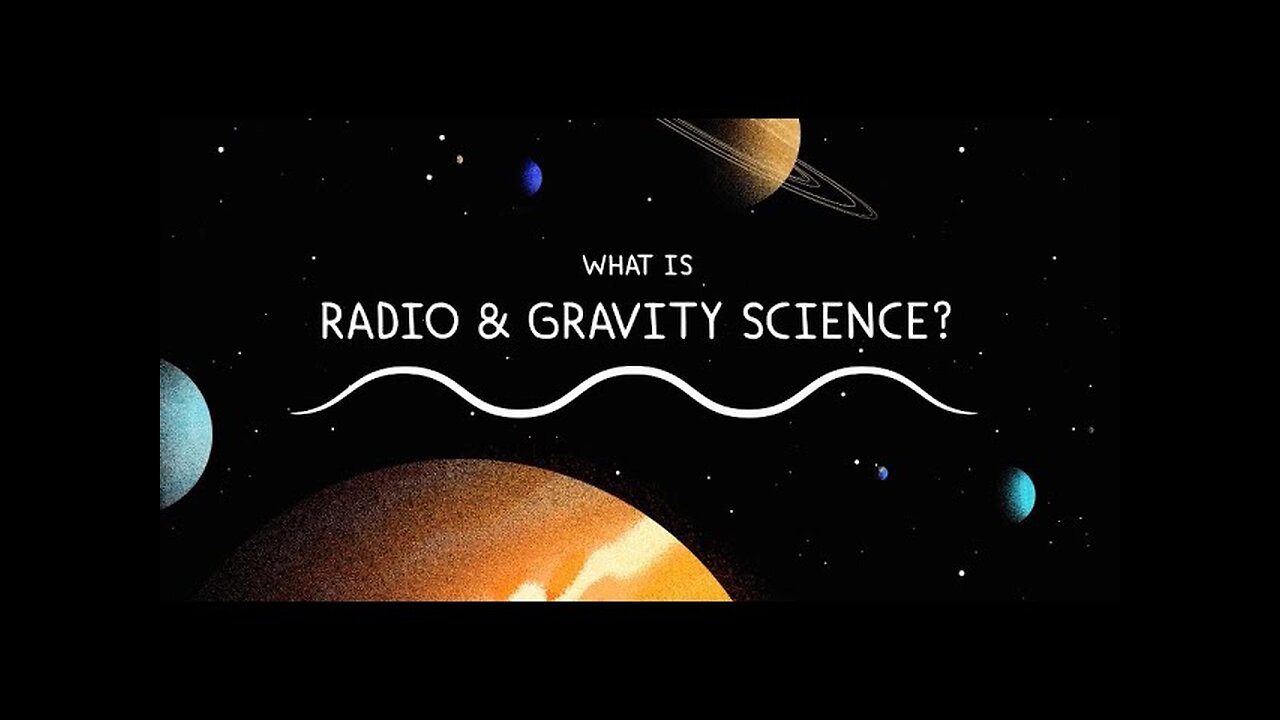Premium Only Content

How NASA Uses Gravity and Radio Waves to Study Planets and Moons
The Deep Space Network, NASA’s international collection of giant radio antennas used to communicate with spacecraft at the Moon and beyond, helps scientists and engineers use gravity and radio science experiments to learn more about our planetary neighborhood.
After reaching a spacecraft reaches its destination, it uses radio antennas to communicate with the Deep Space Network, which in turn transmits radio signals back to the spacecraft. Every spacecraft travels in a predetermined path emitting radio signals as it orbits around its target. Scientists and engineers can infer the spacecraft's location and how fast it's going by measuring changes in the spacecraft's radio signal frequency. This is made possible by the Doppler effect, the same phenomenon that causes a siren to sound different as it travels towards and away from you.
The Doppler phenomenon is observed here when the spacecraft and the Deep Space Network antenna move in relation to each other. Differences between the frequency of radio signals sent by the spacecraft as it orbits and signals received on Earth give us details about the gravitational field of a planetary body. For example, if the gravity is slightly stronger, the spacecraft will accelerate slightly more. If gravity is slightly weaker, the spacecraft will accelerate slightly less. By developing a model of the planetary body's gravitational field, which can be mapped as a gravitational shape, scientists and researchers can deduce information about its internal structure.
The Deep Space Network was developed by and is managed by NASA’s Jet Propulsion Laboratory (JPL) in Southern California. The antennas of the Deep Space Network are the indispensable link to robotic explorers venturing beyond Earth. They provide the crucial connection for commanding our spacecraft and receiving never-before-seen images and scientific information on Earth, propelling our understanding of the universe, our solar system and ultimately, our place within it.
JPL manages the Deep Space Network for the Space Communications and Navigation (SCaN) Program, based at NASA Headquarters within the Space Operations Mission Directorate
-
 16:22
16:22
The Gun Collective
10 hours agoWOW! 17 New Guns JUST GOT RELEASED!
65.4K11 -
 1:13:57
1:13:57
Glenn Greenwald
11 hours agoYoung Men and Online Radicalization: Dissecting Internet Subcultures with Lee Fang, Katherine Dee, and Evan Barker | SYSTEM UPDATE #516
194K79 -
 1:14:57
1:14:57
Sarah Westall
8 hours agoCEO of Crowds on Demand: The Fake World of Social Media, Protests & Movements w/ Adam Swart
75.3K13 -
 4:03:25
4:03:25
Geeks + Gamers
11 hours agoTuesday Night's Main Event
85.5K2 -
 40:36
40:36
RiftTV
10 hours agoHow We Got 400 Leftists FIRED for MOCKING Charlie Kirk | The Rift | Guest: Olivia Krolczyk
83.4K66 -
 1:28:58
1:28:58
Badlands Media
1 day agoBadlands Story Hour Ep 134: Godzilla Minus One
51.5K8 -
 1:33:43
1:33:43
Patriots With Grit
19 hours agoWrongful Death Without Consequences: Inside the Schara Trial | Scott Schara
27.3K1 -
 13:09:25
13:09:25
LFA TV
22 hours agoLFA TV ALL DAY STREAM - TUESDAY 9/16/25
247K49 -
 6:40:18
6:40:18
StevieTLIVE
9 hours agoI'M GONNA BE A DAD!
30.3K3 -
 1:00:14
1:00:14
BonginoReport
12 hours agoSpeech Police Bondi Under Fire - Nightly Scroll w/ Hayley Caronia (Ep.135)
182K129